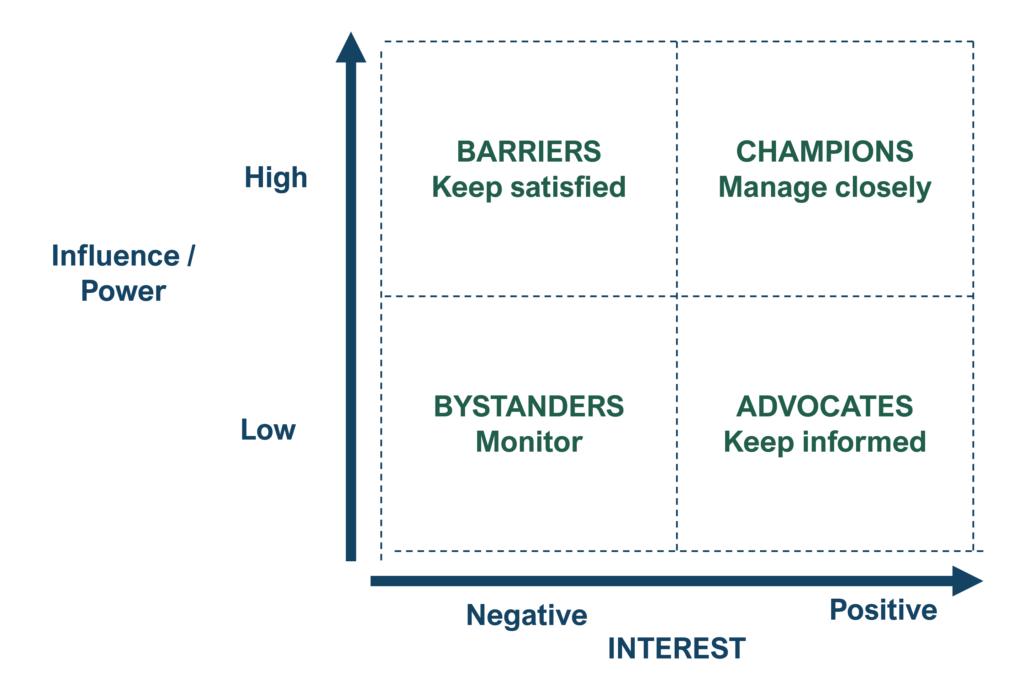In the dynamic landscape of business intelligence (BI) projects, the identification of stakeholders plays a pivotal role in ensuring success. Stakeholders, individuals or groups with vested interests in the project’s outcomes, significantly influence decision-making processes. This article explores a strategic approach to identify stakeholders in BI projects, shedding light on the crucial steps that underpin effective project management.
Understanding Stakeholder Categories
In the context of a business intelligence project, stakeholder categories refer to different groups or types of individuals who have a vested interest in the project’s outcomes. These categories help project managers and teams understand the diverse perspectives, expectations, and influences that stakeholders may bring to the initiative. Identifying and categorizing stakeholders is crucial for tailoring communication strategies, managing expectations, and ensuring that the project aligns with organizational goals.
Several stakeholder categories are prevalent in a business intelligence project. Internal stakeholders are individuals within the organization, such as executives, managers, and employees, who may be directly impacted by the BI system. External stakeholders, on the other hand, include entities outside the organization, like customers, suppliers, regulatory bodies, or industry partners, whose interests may be influenced by the project’s outcomes. Within these broad categories, there are further distinctions, such as primary stakeholders, who have a direct and significant interest in the project, and secondary stakeholders, whose interests may be indirect but still noteworthy. Additionally, identifying decision-makers, influencers, and end-users as distinct stakeholder categories is crucial for tailoring engagement strategies and ensuring the success and adoption of the business intelligence solution. Recognizing these stakeholder categories is fundamental to creating targeted plans that address the unique needs and concerns of each group involved in the project.
Stakeholder Mapping
Stakeholder mapping is a strategic tool used to visually represent and analyze the relationships between different stakeholders in a project. The mapping process involves plotting stakeholders on a grid or diagram based on their level of influence and interest in the project. In a business intelligence project, defining stakeholder mapping typically entails assessing the power and interest of each stakeholder. High power and high interest stakeholders are considered key players and require close collaboration and communication, while low power and low-interest stakeholders may only need monitoring. The resulting map provides a comprehensive view of the stakeholder landscape, guiding project managers in tailoring engagement strategies, managing potential conflicts, and ensuring that the project aligns with the priorities of key stakeholders.
For example, in a business intelligence project, an executive sponsor with the authority to allocate resources and make critical decisions may be positioned in the high power, high-interest quadrant. Meanwhile, end-users who will interact directly with the BI system but may not have decision-making authority might fall into the high interest, low-power quadrant. By understanding this mapping, project managers can prioritize their efforts to engage with influential stakeholders while also ensuring that the concerns and interests of end-users are adequately addressed, ultimately contributing to the successful implementation and adoption of the business intelligence solution.
Engagement Strategies

Communicate with Champions
Communicating with a stakeholder who possesses high influence and a positive interest in a business intelligence project requires a strategic and collaborative approach. Initiate the communication by acknowledging their pivotal role and expressing appreciation for their positive interest in the project. Clearly articulate the project’s goals, benefits, and potential impacts on their areas of concern, aligning the conversation with their strategic objectives. Provide regular updates tailored to their preferences, whether through concise executive summaries or in-depth discussions, and seek their input and feedback. Emphasize the value of their guidance and insights in steering the project toward success. Establishing a transparent and open line of communication, coupled with demonstrating the positive impact of their involvement, fosters a sense of ownership and collaboration, ensuring the stakeholder remains engaged and supportive throughout the business intelligence project.
Communicate with Barriers
When engaging with a stakeholder who wields high influence but harbors a negative interest in a business intelligence project, a nuanced and empathetic communication approach is crucial. Begin by seeking to understand and address their concerns, allowing them to voice their reservations and providing a platform for open dialogue. Clearly articulate the project’s objectives, emphasizing how potential challenges are being proactively addressed. Tailor the communication to highlight aspects of the project that align with their priorities or address pain points. Demonstrate a commitment to mitigating risks and offer solutions that directly respond to their reservations. Engage in ongoing dialogue, actively listening to their feedback, and be prepared to adjust the project strategy based on their insights. By fostering a collaborative atmosphere and addressing concerns directly, you can work towards transforming their negative interest into a more positive and constructive stance, ultimately gaining their support for the business intelligence project.
Communicate with Advocates
When communicating with a stakeholder possessing low influence but a positive interest in a business intelligence project, it’s essential to acknowledge and appreciate their enthusiasm while ensuring they feel valued in the process. Keep them informed about project developments, emphasizing how their positive interest aligns with the overall success of the initiative. Seek their input on relevant aspects, demonstrating that their perspective is valuable to the project’s success. Provide regular updates in a format that suits their preferences, and consider involving them in areas where their expertise or insights can contribute meaningfully. By actively engaging with stakeholders with low influence but positive interest, you not only foster a supportive environment but also tap into a diverse range of perspectives that may enhance the overall success of the business intelligence project.
Communicate with Bystanders
When communicating with a stakeholder who holds low influence and harbors a negative interest in a business intelligence project, it’s crucial to approach the conversation with empathy and a willingness to understand their concerns. Begin by actively listening to their reservations and addressing them with transparency and honesty. Acknowledge their perspective and express a genuine interest in finding common ground. Clearly communicate the project’s objectives, emphasizing potential benefits that may align with their interests or mitigate their concerns. Provide them with relevant information to alleviate any misconceptions, and offer a platform for them to share their feedback and suggestions. By fostering an open and collaborative dialogue, you may be able to transform their negative interest into a more constructive stance or, at the very least, establish a basis for ongoing communication that can help manage expectations and potentially mitigate any adverse impacts on the business intelligence project.
Continuous Monitoring and Adaptation
Monitoring and adapting a communication plan for stakeholders in a business intelligence project is a dynamic process that requires continuous attention to the evolving needs and expectations of those involved. Start by establishing key performance indicators (KPIs) for communication effectiveness, such as stakeholder engagement levels, feedback received, or the clarity of conveyed messages. Regularly assess these metrics and gather feedback through surveys, meetings, or informal channels. Stay agile and be ready to adapt the communication plan based on the changing dynamics of the project and the evolving concerns of stakeholders. Incorporate lessons learned from previous communication efforts to refine future strategies, ensuring that the plan remains responsive to stakeholder needs. Additionally, consider utilizing collaboration tools and platforms that facilitate real-time communication and feedback loops, allowing for swift adjustments to the communication approach. This iterative process of monitoring and adaptation ensures that the communication plan remains effective, resonates with stakeholders, and aligns with the evolving objectives of the business intelligence project.
Conclusion
In conclusion, the process of identifying stakeholders in a business intelligence project is a multifaceted endeavor that requires strategic planning and continuous refinement. Recognizing the diverse interests and influences of stakeholders empowers project managers to navigate complexities effectively. By employing tools like stakeholder maps, engagement strategies, and ongoing monitoring, organizations can foster collaboration and ensure the success of their BI initiatives.
This structured approach not only enhances project management but also contributes to the overall success and sustainability of business intelligence solutions in an ever-evolving business environment. As organizations increasingly rely on data-driven insights, mastering the art of stakeholder identification becomes a cornerstone for unlocking the full potential of business intelligence initiatives.


